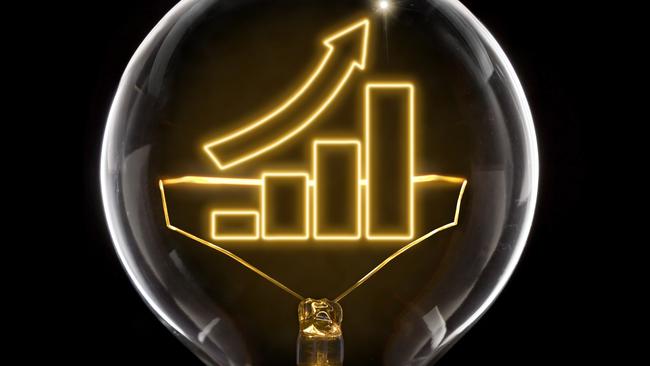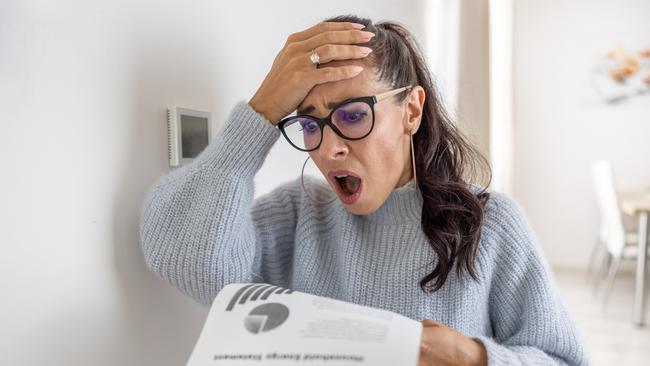Power bill relief plan’s smoke and mirrors impact on inflation
Energy bill relief of $300 will be welcomed by households but it’s not enough to offset Labor promises of price cuts in late 2021.

Business
Don't miss out on the headlines from Business. Followed categories will be added to My News.
The federal government’s $300 energy bill handout to every household won’t go anywhere near covering the electricity savings promised by Prime Minister Anthony Albanese before the last election.
Australian Bureau of Statistics inflation figures show that electricity prices nationally have jumped 21 per cent since December 2021, when Mr Albanese said Labor’s electricity policy would lower prices by $275 by 2025.
Based on ABS data and the government’s promise, Australians’ average annual household electricity bill should have fallen from $1636 to $1361 during the government’s first term, but instead is sitting at $1979.
The electricity price inflation would be higher still if not for federal and state energy bill relief last year reducing costs.
Labor Ministers Jim Chalmers, Chris Bowen and Jenny McAllister confirmed this when announcing the new power bill relief on budget night.
“In the year to the March quarter 2024, electricity prices rose 1 per cent, and would have risen 14.9 per cent without our energy bill rebates,” they said.

The new $300 rebates – to be paid in $75 instalments on quarterly bills – are forecast to have an even bigger impact on reducing inflation.
“Based on estimates of 2024–25 standing offers, the Commonwealth’s energy bill relief means that nationally household bills will be 17 per cent lower on average compared to the previous year,” the ministers said.
Shadow Treasurer Angus Taylor told morning radio on Wednesday that Labor’s plan was “smoke and mirrors”.
“At the very best, the energy relief is deferred inflation, you just put it off for a year, comes back again, because you’re not going to keep offering that 300 bucks that goes to everybody,” Mr Taylor said.
“So it’s not a real reduction in inflation. And the truth is, the Reserve Bank will look straight through it, they’ll look at the underlying inflation, that’s what they do. That’s what they should do. So they’re going to ignore this smoke and mirrors.”
KPMG chief economist Brendan Rynne also used the “smoke and mirrors” inflation description in his budget summary.
“The production costs associated with supplying energy are unchanged; it is just that the price paid by customers through their energy bill is lower because of the rebate,” Dr Rynne said.
“As soon as the rebate is withdrawn the prices paid by households will rebound, assuming there has been no change in the production cost of electricity, and inflation will kick up again,” he said.
“A case of ‘now you see inflation, now you don’t’.”


Research by Finder.com.au suggests many households are struggling under the weight of high power bills and planning to take action to save on winter energy bills.
Finder utilities specialist Mariam Gabaji said the new power relief was welcome but might not be enough for some households.
“Energy prices have skyrocketed in the last couple of years and bills have doubled for some,” she said.
“We’re also waiting to see if there will be any reprieve when new electricity prices are announced for the 2024-2025 financial year, likely at the end of this month.
“Depending on where you live, your state or territory could have more energy bill relief on offer. For example, Queensland is giving all households a $1,000 energy rebate in the first quarter of the 2024-2025 financial year, while Western Australia is handing another round of $400 energy bill credit following a budget surplus.”
Comparison website iSelect’s spokeswoman, Sophie Ryan, said people should not wait for the bill relief to examine their household energy costs.
“Short-term energy bill relief measures will be good news for Aussie households struggling with cost-of-living hikes across the board, but the best way they could secure ongoing savings is to act now and see if there’s a better deal,” she said.
More Coverage
Originally published as Power bill relief plan’s smoke and mirrors impact on inflation





